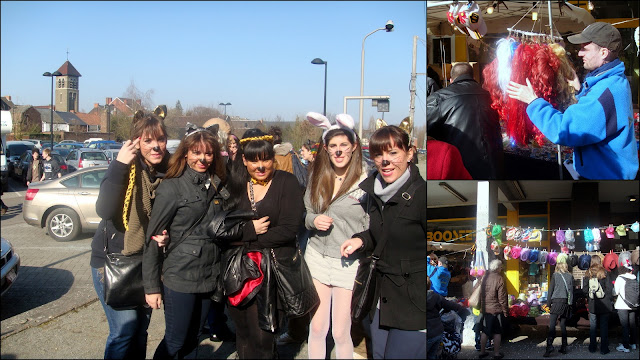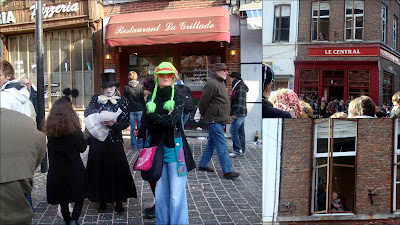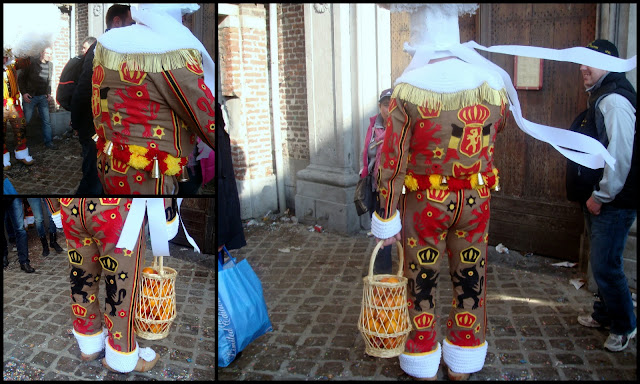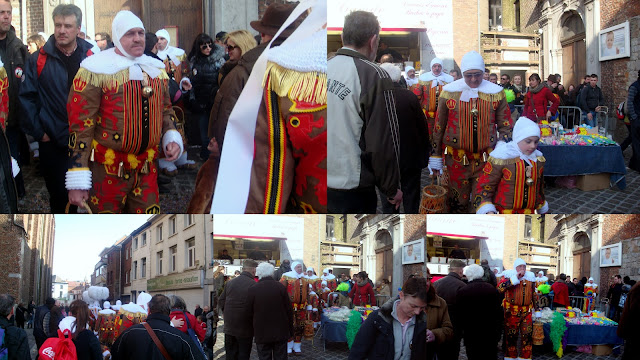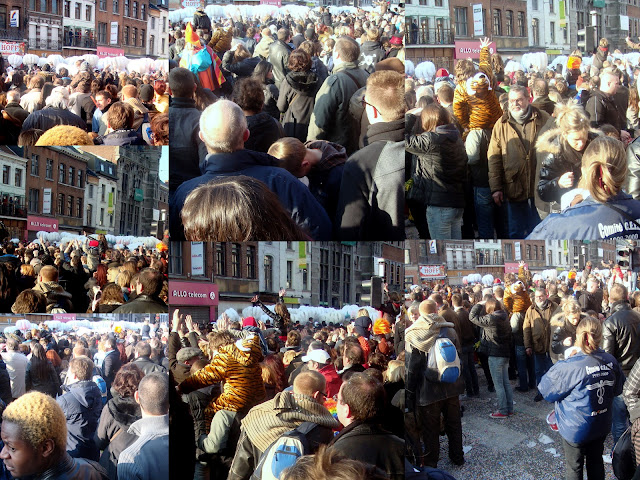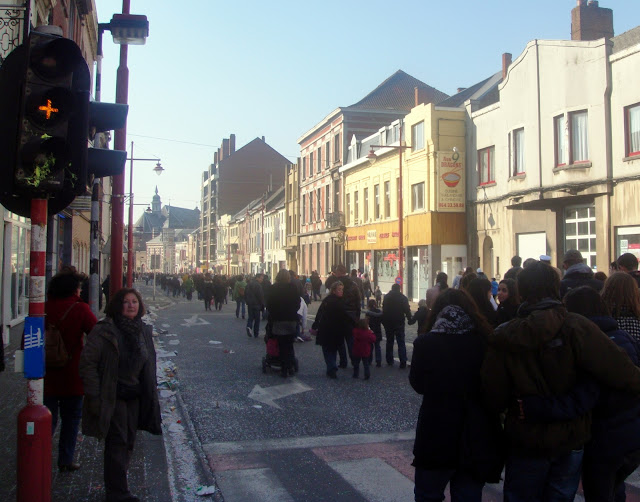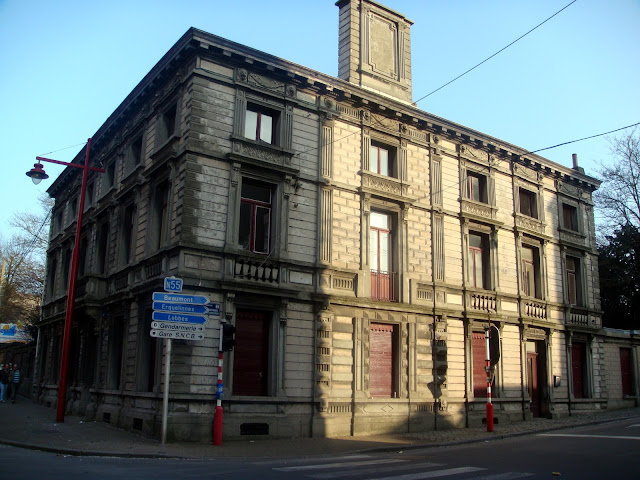The carnival of Binche is an event that takes place each year (one hour train from Brussels) during the Sunday, Monday, and Tuesday preceding Ash Wednesday. The carnival is the most known in Belgium and has been proclaimed as a Masterpiece of the Oral and Intangible Heritage of Humanity listed by UNESCO in November 2003. Its history dates back to approximately the 14th century, but probably even before that. Nobody knows exactly the origin and when it really started.
I had never been to the carnival of Binche, but as 3 of my painting class mates wanted to go there to watch the procession, I thought this would be fun and certainly interesting too. I wrote about this here
And it was ! I don't want to write down here what you can read in books and brochures, so if you want to know more about the Carnival of Binche traditions you can read them here.
The most important day is Mardi Gras where the parade takes place with more than 900 Gilles and to see that we took the train from Brussels to Binche. There was even a special price for the carnival train ticket !
During the procession, the « Gille » wears his impressive hat covered with ostrich feathers and throws oranges in the crowd ! I tell you I was a little afraid because of my glasses ! Some people had protected their windows with grids !
During the procession besides the "Gille" other characters dance at his side : the Paysans » (peasants), the « Pierrots » and the « Arlequins », and of course all people are dancing on the streets to the rythm of the drums.
First thing we did, to join in the fun, was buying a wig.
People were disguised and some costumes were really very funny. In the windows the inhabitants watched the parade.
This is not the Queen of England ... even the police had fun
By pure coincidence I had the chance to watch how the Gille put on his hat again, which is very heavy !
I was sitting there and had a sandwich when I saw some of them coming out of a door besides the church, what a chance to get such a close look on their costume.
Besides the impressive ostrich-feather hat, each decorative detail of his costume- the lion of Belgium, heraldry, crowns or stars- has a symbolic meaning.
The national colours of black, yellow and red dominate. Certain parts of the costume may require dozens of metres of material- up to 150 metres of ribbon may be needed to make the ruff for example.
The Gille also wears a belt of 7 to 9 bells worn around the waist, as well as a smaller bell on his shirt front on his feet he wears clogs. Each Gille is bound to respect certain customs. He must come from Binche, and must not sit down in public, ever get drunk (I have my little doubts about that) or go anywhere without being accompanied by (at the very least) a drummer.
Thanks to my wig, a Gille asked me to pose besides him !
When the hat gets older the feathers become grey, so the feathers are painted to refresh their look.
As you can see the carnival starts quiet early with Champagne
The weather was fantastic and these young men had a real good view over the procession.
the rest of us was not so lucky
There were so many people watching the procession that it was impossible for me to take better pictures.
But at least it gives an idea of the athmosphere
Unfortunately my video didn't come out well at all, so I took this from YouTube, just that you can hear the drums ! One who is not used to that, quickly gets enough of this rather monotonous music.
The streets were full of people from all over the country and there were also lots of English tourists !
We had a lot of fun
Binche is a beautiful little town
a part from the old city wall
a nice building, I liked the architecture
and the Station where we arrived and had to take our train back to Brussels.
more participants here

